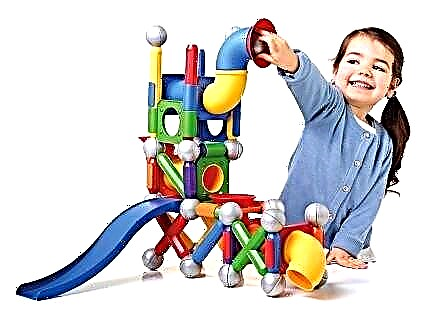The appearance of the child's first tooth is a long-awaited and anxious moment that every mother is waiting for with alarming and joyful feelings. This is not surprising, because the process of teething is painful and lengthy. The kid is worried about constant itching and pain, he becomes moody, does not sleep well, does not want to eat. To alleviate the general condition, you can use improvised, medicinal or special means: drops, ointment or gel for gums when teething in babies.

The baby's teeth are being cut
When teeth start to cut
The process of tooth formation begins already in the fourth month of pregnancy, in the fifth month, molars are laid. The period of appearance of the first clove in each newborn baby is individual. The most natural age is considered to be 5-7 months, but often the tooth begins to cut as early as 3 months or does not appear until a year. Do not worry - such deviations are completely natural and are a variant of the norm. It's just that in the case of late eruption, the interval between the appearance of teeth is reduced, and the intensity of their growth increases. Up to three years old, the baby grows all milk teeth.
Teeth, in general, do not grow chaotically, they appear in pairs, according to a certain pattern. Of course, there are deviations, and the sequence changes, but this does not affect the development of the child - such is his individual feature.
Appearance sequence:
- A pair of central incisors on the lower jaw (6-10 months);
- A pair of central incisors in the upper jaw (8-12 months);
- Upper lateral incisors (9-13 months);
- Lower lateral incisors (10-16 months);
- Upper canines (16-22 months);
- Lower canines (17-23 months);
- First molars on the lower jaw (14-18 months);
- The first molars in the upper jaw (14-19 months);
- Second molars on the lower jaw (23-31 months);
- Second molars on the upper jaw (25-33 months).
Interesting. If, during the growth process, the teeth are located asymmetrically, do not worry. With the advent of 16-20 pieces, they will fall into place.

First pair of teeth
Signs of eruption
To understand that a newborn baby's teeth are teething, you can a couple of weeks before they appear. The first signs of dentition eruption:
- Profuse salivation.
- Redness and swelling of the gums.
- Itching and soreness of the gums.
- The desire to gnaw everything that falls into the hands.
During this period, the baby is capricious, crying, sleeping poorly, refusing to eat, and sometimes from the breast. All children endure such tests in their own way: some are steadfast, without any special differences in behavior and deterioration of well-being, others are difficult, complications may arise. They are associated with a weakened immune system and further complicate the general condition. - observed:
- Temperature rise.
- Runny nose, cough. A child cannot cope with a large amount of saliva, it accumulates, causing a cough and provoking a runny nose.
- Stomatitis. The kid chews on various objects, not always clean. In the oral cavity, wounds form, into which the infection enters.
- Ear pain. Nose, ears, throat, teeth are interconnected - if one organ starts to hurt, pain is felt in others.
- Diarrhea. The exact cause of the digestive upset is not known exactly. Perhaps this is a consequence of the stress that the body is experiencing.
During the period of tooth growth, the protective functions of the body decrease - the child may develop a viral and infectious disease. With prolonged fever, coughing and poor health, the baby should be shown to the doctor.
Council. The mother's attention can ease the suffering of the baby. All that is needed is to postpone all the "important" matters, calm the baby down, hug it affectionately, and wear it in your arms. Children need mother's warmth, tenderness, understanding.

In the arms of mom
Coolants and pain relievers
When the teeth begin to erupt, the baby is annoyed by itching and pain in the gums. If other complications do not bother you, you can alleviate the child's condition with improvised means. They will help cool the gums, relieve itching and irritability:
- Silicone teether. A special device in the form of a ring with a thermogel inside. Previously, it should be placed in the refrigerator and chilled to give the crumbs.
- Massage. You can grind the gums using clove oil or ice cubes.
- Compresses. Chilled decoctions of medicinal herbs (chamomile, lemon balm, oak bark) have a good calming effect.
In case of fever and intense pain, you can use general medications: Ibuprofen (syrup or rectal suppositories Nurofen), Paracetamol (Panadol, Efferalgan). Candles on a homeopathic basis (Vibrucol), Interferon have proven themselves well.
Rules for the use of special drugs
To relieve painful sensations and itching for a while, the use of special topical agents can be used: these are creams, ointments, gels for teeth, pain relievers for infants. Unfortunately, due to the abundant secretion of saliva, the effect of such drugs is short-lived, but even short-term relief improves the baby's well-being.
When using teething products, you must adhere to several rules:
- The gel is applied only in case of severe discomfort, no more than 5 times a day. It is more of an emergency rather than a treatment.
- The drugs are used strictly according to the instructions, it is advisable to first consult a doctor.
- The gel is applied with clean fingers, with gentle massage movements. No need to rub or press hard on your gums.
- When using the product, a freezing effect occurs. Avoid getting it on the tongue, cheeks, lips - this will cause unnecessary discomfort.
- The drug is stored out of the reach of children, preferably in the refrigerator.
Important! For babies under one year of age, plant-based ointments and gels are used.

Applying the gel to the gums
Types of gels
Depending on the composition of the drug, three types of gel can be distinguished for teething in infants:
- With anesthetic and cooling effect. The drug contains the anesthetic Lidocaine, as well as homeopathic and anti-inflammatory components.
- With anti-inflammatory action. The gel is based on antimicrobial and antiseptic components.
- With a calming and healing effect. Homeopathic remedies with natural plant substances.
Modern drugs rarely have only one direction of action. Most gels and ointments are combined - used for pain relief, itching and healing. What means to choose is decided by the mother or the doctor, based on the condition of the baby.
Review of the best drugs
On the pharmaceutical market there is a wide range of gels, ointments, creams, drops to facilitate the process of tooth growth. According to reviews from experts and consumers, several products have proven to be especially effective.
Rating of the best drugs:
- Cooling and pain relieving gels:
- Calgel. A combined remedy that can reduce pain and prevent the formation of an inflammatory process. The advantages of the gel are a quick effect and the possibility of using it from 5 months of age.
- Dentinox. A multi-component drug designed to help with inflammation, irritation, and intense pain. It contains Lidocaine, Polidocanol, chamomile infusion. It is used from 4 months.

Dentinox gel
- Dentol baby. Anesthetic gel, low toxicity, does not irritate the mucous membrane. Used from 3 months. Most affordable.
- Anti-inflammatory gels:
- Holisal. The combined agent has an antimicrobial effect, eliminates gum swelling, relieves inflammation. Used since 1 year.

Cholisal gel
- Kamistad baby. The main substance in the gel is polidocanol. The drug assists in eliminating infection and inflammation, relieves pain.
- Homeopathic remedies:
- Baby doctor. Gel based on herbal ingredients. Eliminates inflammation, soothes irritation, does not contain alcohol. There is no age limit or number of uses.

Gel Baby Doctor
- Camilia. The drug is in the form of drops based on natural substances - chamomile and rhubarb infusion. Has anti-inflammatory, calming effect, has no side effects, is used from infancy.
Attention! You need to apply the gel after feeding or half an hour before meals.
Side effects
The drugs used in teething are characterized by a diverse composition: these are anesthetics, preservatives, herbal ingredients, antimicrobial substances. The combination of such elements in some cases can have side effects:
- Allergic reaction. May develop due to individual intolerance to the constituents of the drug. It manifests itself as a red rash, itching, tissue edema.
- Cardiological disorders, convulsions. They are extremely rare, as a result of a significant overdose of the drug. An active substance, lidocaine, can cause such a reaction.
- Metamoglobinemia. A condition caused by a violation of oxygen metabolism in the human body and an increase in metaglobelin. This side effect is caused by the benzocaine component.
If a child suffers a viral disease (chickenpox, flu), it is not recommended to use gels that contain choline salicylate.
To avoid serious consequences as a result of the use of drugs for teething, you should follow the recommendations:
- Consult a doctor, especially if the child is prone to allergies.
- Use topical agents only if urgently needed.
- Do not exceed the dosage indicated by the manufacturer.
You should immediately stop using the gel at the first signs of deterioration in the baby's condition.
Gels, ointments, creams to facilitate the process of teething effectively relieve pain, eliminate inflammation, itching, and soothe the mucous membrane. The drugs are short-lived, and side effects may occur. Using these funds, you should carefully study the instructions and follow the doctor's recommendations.



